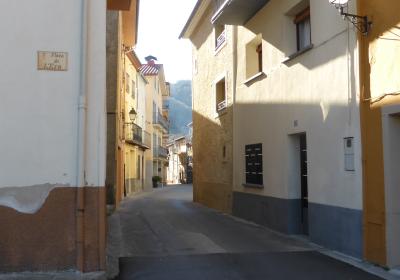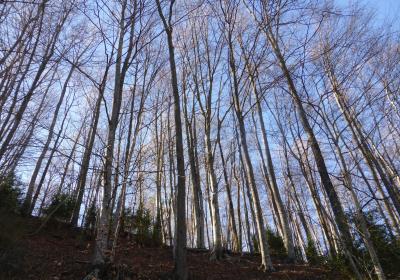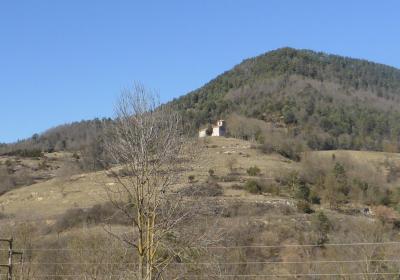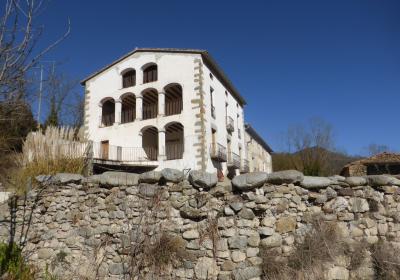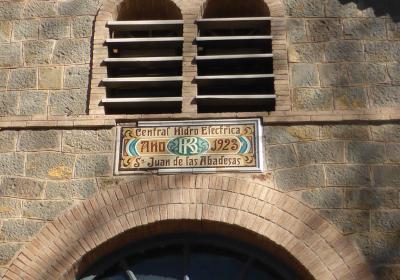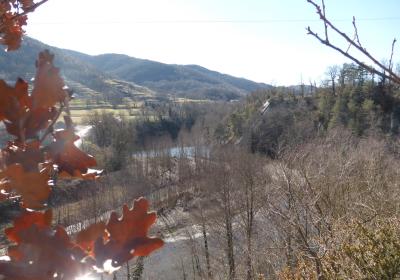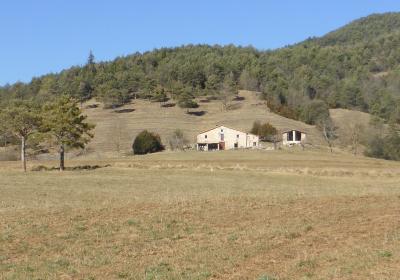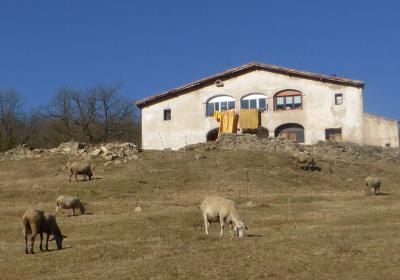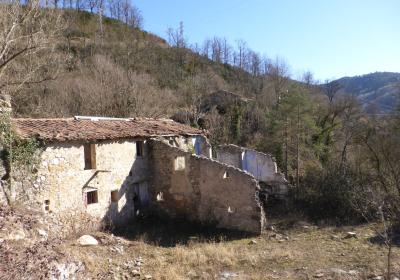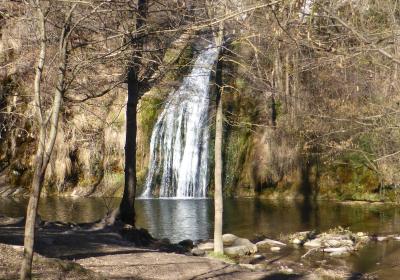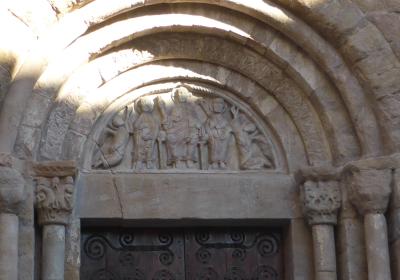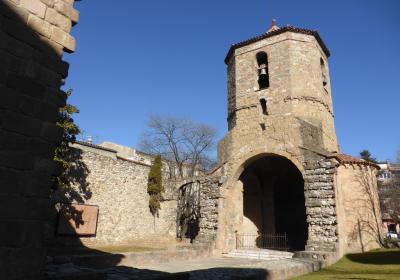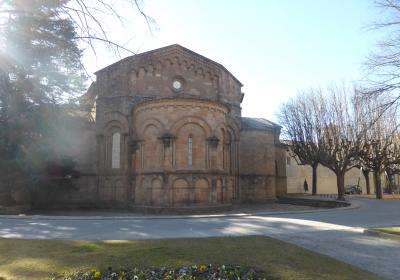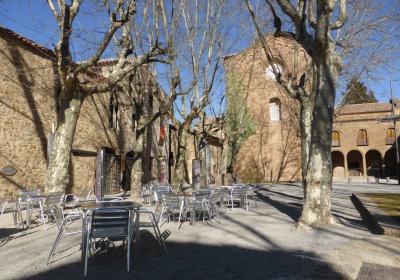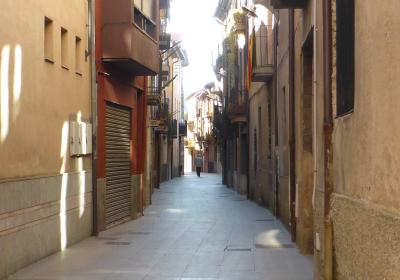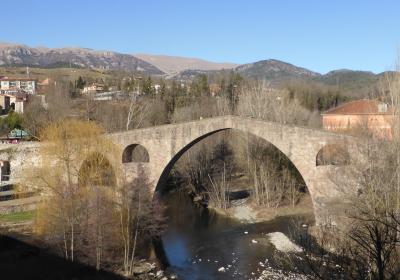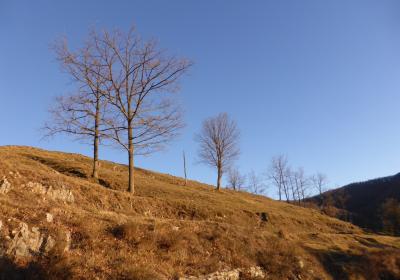The seventh stage of the GR 1 Transversal Route begins in Sant Pau de Segúries. From this pretty town you follow the course of the river Ter all day, first along the shady side of the valley, and then afterwards, along the sunny side. You leave behind the “tough and difficult to walk through” land of Alta Garrotxa and head into the heart of the district of Ripollès. You walk through pretty forests, trace pasture fields and walk past country houses with centuries of history. Finally, you will reach the town of Sant Joan de les Abadesses, an extremely important medieval town.
Average. Due to the distance and ascent to overcome.
No special equipment needed.
Taga, Serra Cavallera. 1:25.000. Editorial Alpina.
Topographic base of Catalonia 01:25,000 Geological and Cartographic Institute of Catalonia (ICGC).
The stage begins in the town of (1) Sant Pau de Segúries (0:00 - 860m). You leave the town via its southern extreme, and just before reaching the bridge of Sala, take a path that emerges on the left hand side (S). You follow the white and red GR 1 signs that coincide with those of the GR 151 or the Camí del Bisbe Abat Oliba, an historic route that links he districts of Bages, Osona and Ripollès. You cross Rec de Collsalarsa and Rec de la Puda, which comes down from the well-known spring of La Puda, a spring with sulphurous waters hat have medicinal properties. You walk among deciduous forests until you get to (2) Bac de Can Gorra (0:40 - 834m), at which point you leave the C-38 road.
You now head 600m along the hard shoulder of the road, following the white and red GR signs at all times. When you are level with the Els Plans house, which is on your left (S), you take the path that emerges on the right (NW) and a few metres further ahead it crosses the Ter river over the (3) bridge of Perella (0:50 - 805m). Once you have crossed the bridge, take the path on the left (SW). If you were to continue along the path on the right (NW) you would climb up to the hermitage of Santa Magdalena de Perella (0:45 round trip), which is located in a bucolic area, atop a hill and surrounded by pasture fields.
Take the path on your right (SW) and climb up to the Plans del Marquès and towards the country house that is also named after him. You continue along parallel to the river and Reixac channel. You pass through Mas el Grau and cross the (4) stream of Pal (1:10 - 793m). You then cross the (5) stream of Muig (1:30 - 795m) and you will now see, on the other side of the Ter, the old Colònia Llaudet. This industrial complex was constructed in 1901 in order to produce cotton yarns. The complex is comprised of the factory, the director's house, two blocks of residences for workers, a church and a café that was also used as a dance hall. The large number of textile colonies built along the Ter river are places of great historic importance and witnesses of a time when the river was the main economic driving force in the valley. Colònia Llaudet closed at the end of the 90s, as the consequence of the crisis in the textile sector, and it is currently abandoned and in a process of deterioration.
You continue along the orographic right bank of the river. You pass the country houses of Can Janpere and reach the (6) bridge and mill of Malatosca (2:00 - 785m). A few metres further down is the Gorg de Malatosca, which according to legend was the meeting point for witches and a refuge for magical beings. Almost immediately you come out onto the path of the Ruta del Ferro i del Carbó, an old train track that connected Sant Joan de les Abadesses and Ogassa and that has been reconverted into a green way. You go along this path for short distance towards Sant Joan de les Abadesses. You pass the old train station, which is currently a hostel and go down the last few metres through the Estació neighbourhood before reaching the old bridge known as Pont Vell in (7) Sant Joan de les Abadesses (2:20 - 769m), the finishing point this very pleasant stage along the Ter valley.
The beautiful riverside landscapes and the expansive deciduous forests of the valley of the Ter river.
Visit the extraordinary monastery of Sant Joan de les Abadesses.
Discover the little Romanesque hermitage of Santa Magdalena de Perella.
The beautiful views of the Cavallera mountain.
The Roman Way of Capsacosta -also named Via Annia- is an extraordinary feat of engineering built more than 2000 years ago? During the era of the Roman Empire, this road connected the Mediterranean Sea with the Pyrenees and Gaul: from Empordà it passed through the valley of Bianya, it crossed Capsacosta and then crossed the Pyrenees over the hill of Ares.
Visiting the monastery of Sant Joan de les Abadesses. This monastery was found by count Guifré el Pelós in 887 and his daughter Emma was subsequently its abbess. The city of Sant Joan was built in the area around the monastery. The complex experienced its years of maximum splendour during the medieval era, but it also experienced various periods of hardship, such as the earthquake of 1428 that destroyed the bell tower and the Romanesque cloister.
The old GR 1 circuit passed through the sunny side of the valley; this path is almost not used anymore and it is difficult to follow. From Sant Pau de Segúries to Sant Joande de les Abadesses the current GR 1 route coincides with that of the GR 151-1. Some stretches of it also coincide with the Ter Route.

